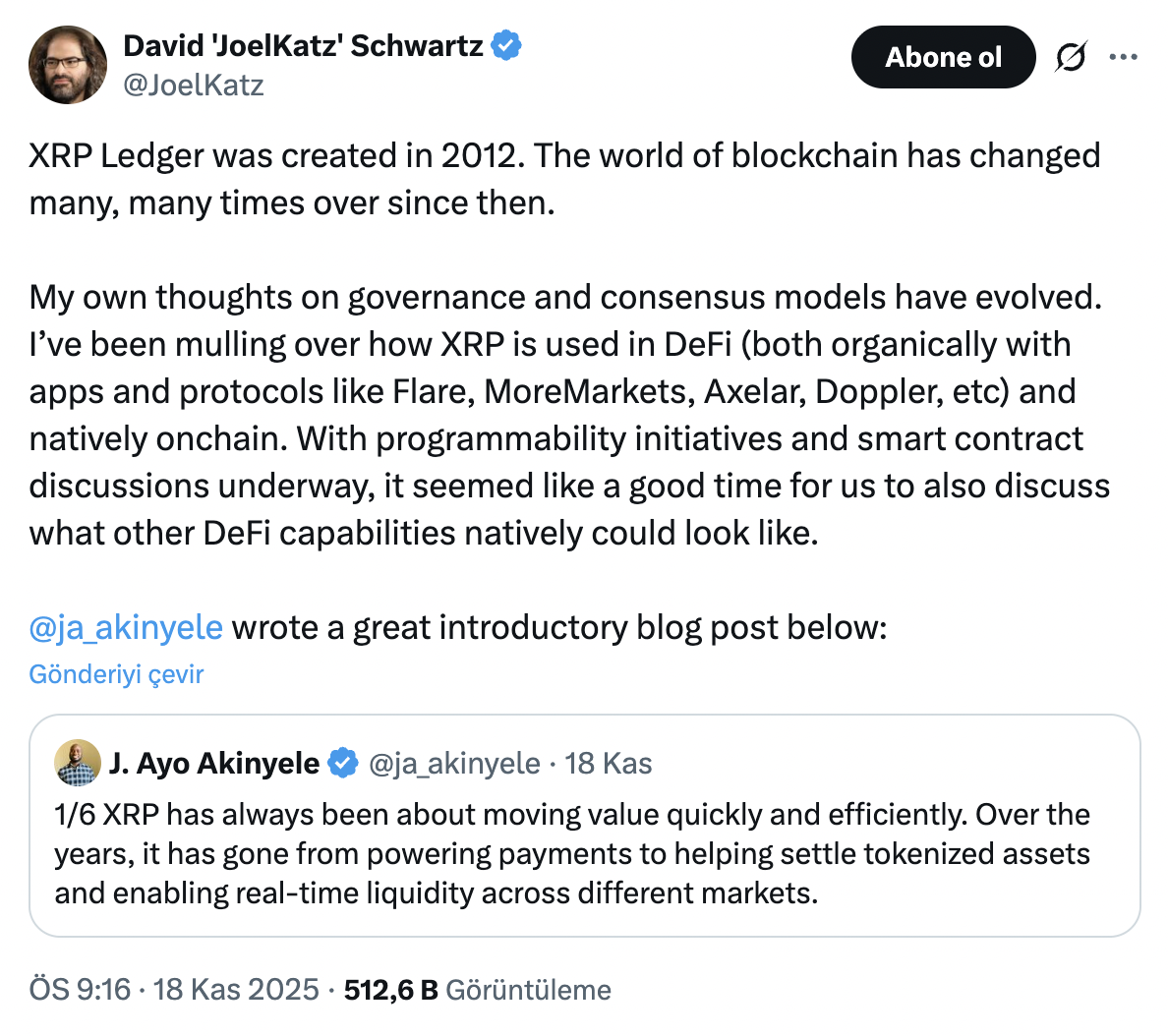Ripple  $2.12X’s Head of Engineering J. Ayo Akinyele and is preparing to leave his position as CTO at the end of his term. David Schwartzreignited the debate regarding the future direction of the XRP Ledger (XRPL). While Akinyele’s latest assessment shows that the local staking model may come to the fore with the increasing institutional use of XRP, Schwartz said that although this idea is technically attractive, it may not be feasible in the short term.
$2.12X’s Head of Engineering J. Ayo Akinyele and is preparing to leave his position as CTO at the end of his term. David Schwartzreignited the debate regarding the future direction of the XRP Ledger (XRPL). While Akinyele’s latest assessment shows that the local staking model may come to the fore with the increasing institutional use of XRP, Schwartz said that although this idea is technically attractive, it may not be feasible in the short term.
Staking Controversy Erupted in XRPL
Akinyele, XRPHe emphasized that ‘s role is no longer limited to value transfer alone, but is also expanding into the DeFi space, with tokenization, real-time payments, DATs, and the first spot XRP ETF approved in the US. He noted that this growth necessitates new ideas on incentive models and network participation. According to him, in order to implement local staking in XRPL, both a sustainable reward source and a fair distribution mechanism are needed.
current structure transaction feesIt is based on a model in which the trust is burned and the reliability of validators is measured by performance. Akinyele stated that this system has been working stably for more than ten years, but if staking is included in the future, it may be considered to direct some of the fees to the reward pool. However, he added that the fair distribution of incentives and their impact on governance should be carefully designed.
Ripple The manager also stated that ecosystem projects such as Flare, Doppler Finance, Axelar and MoreMarkets are already testing staking-like mechanisms, so the intellectual infrastructure is already being formed.
Technical Commentary on Change from David Schwartz
Schwartz, X In his statement on his account, governance and consensus Stating that his thoughts on models have evolved over time, he said that it is natural for XRPL to discuss new designs suitable for today’s DeFi ecosystem. He pointed out that the current model, developed in 2012, needs to be rethought according to today’s smart contract-oriented structure.

Schwartz shared two technical scenarios discussed within the community. The first scenario involves a two-layer consensus system in which a small group of internal validators based on staking will advance the ledger. The outer layer will be responsible for fees, updates and surveillance. In the second scenario, the current model is preserved and zero-knowledge proofs financed by transaction fees are expected to verify smart contract executions. According to him, this method can allow nodes to verify without directly running a contract.
However, Schwartz emphasized that both approaches are technically fascinating but unrealistic projects in the short term. Your main purpose XRPLTo raise awareness about which values will be preserved in the future of , and which new capabilities can be harmoniously integrated.






